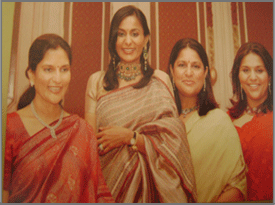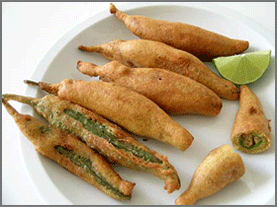Cook Book for SACHi
Saving a Child’s Heart (SACHi) is an initiative of Apollo Hospitals that has enabled thousands of under-privileged children with heart disorders to receive treatment, in many cases, at no cost. This being a cause that is close to my heart, as my humble contribution the proceeds from the sale of this book will go towards SACHi.
The Annam (Food) prepared tastefully with good heart and with correct proportion of six rasas, becomes a medicine and gives us long life, good health, power and brightness.
Mothers pass on to daughters.
Charakasamhitha
[/gdlr_heading]
History, culture, tradition and love. 
Good wishes for health and wealth
All going into the food,
We make for our children.
As I dedicate this book to you
My first born child,
I wanted to give you
A piece of me and
A piece of your heritage.
To preethu…
From mummy.
Foreword
 HDFCBUS50I clearly remember the shy young sucha, when we went to live in the USA, soon after our marriage.she could hardly distinguish between a pan and pot. But a few words of gentle persuasion and encouragement unleashed the innate passion and gift, she had for cooking. For a girl, who had no need to enter the kitchen till she got married, it is amazing how in a few months, she turned into a super chef and single handed, could turn out a spectacular spread for a hundred people, with an impressive array of dishes, each one a gastronomic delight and earning the sincere admiration of every guest. Thankfully her passion for cooking and flair for entertaining have not waned even after we returned to India. So much so, that I do not have any apprehension in bringing home a guest unannounced for dinner. Even there is no notice; sucha has never failed in preparing and serving every time, a culinary delight.
HDFCBUS50I clearly remember the shy young sucha, when we went to live in the USA, soon after our marriage.she could hardly distinguish between a pan and pot. But a few words of gentle persuasion and encouragement unleashed the innate passion and gift, she had for cooking. For a girl, who had no need to enter the kitchen till she got married, it is amazing how in a few months, she turned into a super chef and single handed, could turn out a spectacular spread for a hundred people, with an impressive array of dishes, each one a gastronomic delight and earning the sincere admiration of every guest. Thankfully her passion for cooking and flair for entertaining have not waned even after we returned to India. So much so, that I do not have any apprehension in bringing home a guest unannounced for dinner. Even there is no notice; sucha has never failed in preparing and serving every time, a culinary delight.
The one ingredient, which you won’t find in any recipe book, but which sucha invariably, adds rather generously, is tender loving care, which makes all the difference. In some ways reflecting the belief that was instilled in us from in us from childhood that feeding people is the most gratifying deed. To this day, no visitor to our home is allowed to leave without partaking a meal with us.
I don’t know exactly when she decided to write a book but Nostalgia Cuisine is not just a cookbook. It is a documentary that reflects her love for our culture, tradition and of course the cuisines of telengana . it is not a professional writer’s mere product for sale, but is an expression of experiences collated with love and presented with affection.
Dr. Prathap C Reddy
Preface
 This book couldn’t have been named better. And if there is anybody who can authoritatively talk about cuisine and successfully associate nostalgia with it, who else but Sucharitha reddy. A rare combination of two obvious opposites-a fierce pride in her telengana family roots and here innate humility.
This book couldn’t have been named better. And if there is anybody who can authoritatively talk about cuisine and successfully associate nostalgia with it, who else but Sucharitha reddy. A rare combination of two obvious opposites-a fierce pride in her telengana family roots and here innate humility.
Born in a Zamindor family, the young sucha obviously didn’t spend hours in the kitchens of her vast household. She has herself told me that she knew practically no cooking, when she had to accompany her husband to the USA, soon after their marriage. And this is what amazes me, how in a short while cooking became a passion with her. Gathering popular recipes not just from Andhra, but from all over the world and more importantly bringing in her own innovations and improvisations. For Sucharitha her intuition rather than scientific measures was more relevant, for example she would dare to add an extra dash of a particular spice, over and above the prescribed quantity and that made the dish taste actually better. The honest admiration expressed by her loving husband and her doting daughters proved to be powerful inspirations for her. Sucha has all the qualifications to author an authentic compendium of Andhra recipes. And this book demonstrates it. The narration makes the dishes come alive, so much so, that you can almost smell the aroma and savour the taste.
Perhaps I would have been a bit disappointed, if this was just another cook book. Sucha’s
Depth of knowledge and her formidable collection of artifacts , jewellery, dresses, books and any thing and everything to do with Andhra Pradesh and especially Telengana would have remained unsung Fortunately she has not denied us the pleasure and has devoted a part of the book to the tradition, culture and mores of Andhra. Though the pages are few, they are as delectable as the recipes themselves.
Now that she has done a marvelous job in her first attempt, I am sure Sucha will continue to surprise us with more such offerings. May God give her a long healthy life so that we regularly get to take refreshing dips in the vast reservoir of knowledge that she so unassumingly possesses.
Sreelath Bhupal
Rani of Gadwal
The Author
 I learnt more history, geography, sociology, religion, and economics of my region, in my mother’s kitchen than is school.
I learnt more history, geography, sociology, religion, and economics of my region, in my mother’s kitchen than is school.
Growing up in a Zamindar family in ‘Hyderabad State’ just before independence, my most enduring memories often relate to the stories smells and sounds which emanated from our kitchens. Festivals, we used to correlate with the special food that was served. From Vinayaka Chaturthi’s twenty-one vegetable curry and the most lavish feast of all on Vijaya Dashami marking the end of the nine-day Navratri fast, to the traditional Pachadi of Ugadi, with varying flavours sweet, sour, tangy and spicy significance and a history.
Our house was filled with family and extended family. On a normal day the kitchen would serve over a 100 people. And there were weddings, engagements, birthday or some other functions every month. These festivities again revolved around food and meant feeding more friends, family and sometimes the entire village. On top of it, I would often organize Bommala pendli or Doll’s wedding complete with a play priest and followed by a lavish feast for my cousins and servants.
Refrigerators were a rarity and instant food non-existent. As a result we ate according to the seasons and the crops that grew. Rice dal and pickle were stored carefully but only for one season. That every meal should be cooked afresh was taken for granted. The ingredients were seasonal and often prepared to help our bodies adjust to slimate outside and most people I knew, actually ate what was grown or reared on their vast properties.
The life style was different. I can’t recollect very many fat people, probably with the exception of our grandmothers. Only a few people were diagnosed with diabetes. Cancer was still a mysterious disease and certainly not associatedwith food we ate. Neither was hypertension linked to high salt and fat intake. The fact was, we ate to support our body’s needs and not the other way around. As kids we spent most of our time flexing our hands and legs not thumbs and eyeballs. Adults we spent most of our time flexing our hands and legs not our thumbs and eyeballs. Adults also were more active. Only the matriarchs of the household or Dorsani’s personified the indulgent and sedentary lifestyle, not at all suitable to the rich food they ate.
This book is description narration of our times and culture. The food might be complicated for every day cooking and eating, but this is Nostalgia Cuisine, it will remind us of our childhood and our roots. It will remind us of our rich history (some families mentioned in this book can trace their lineage over 21 generations, 700 years). It
will remind us of our achievements, our glory and most of all it will provide us a temporary haven in our mother’s kitchens where we felt loved, and always full.
My book is based on my life and experiences and above all, it’s been shaped by people I love, those I admire and my amazing heritage. What began as a cookbook soon turned into a project which encompassed my love for art, history, textiles, jewellery and festivals as much as cuisine.
I hope you enjoy reading this book and trying out the recipes, as much as I enjoyed writing it.
Sucharita Reddy
.
